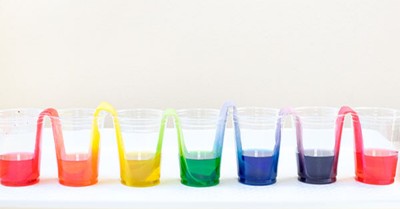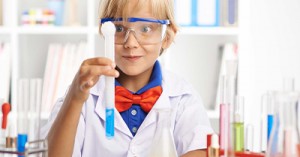Children will be excited to see how the colours transform overtime as the water moves from one glass to another.
Materials Needed:
- 3 empty glasses
- Water
- Food colouring
- Paper towels
What to do:
- Place your two empty glasses about 5cm apart.
- Pour water into one of the glasses until it is halfway full.
- Add a few drops of food colouring into the water.
- Stir the food colouring until the water is all one colour.
- Grab a strip of paper towel that is about 5cm wide.
- Place one end of the paper towel into the glass with the water. Then place the other end into the glass that is empty.
- Then leave the glasses sit and come back to check on them in about an hour.
- Return to the glasses and observe what has happened.
The longer you wait to check on the glasses will result in more of the water moving over to the other glass. The water will stop moving over until the cups are both filled with the same amount of water.
The Science Factor
The water appears to defy gravity, but in reality, it moves because of a process called capillary action. Water is able to move against the force of gravity because water molecules stick to each other AND they stick to the fibres of the paper towel. As water molecules are attracted to the fibres of the paper towel, they pull other water molecules with them. The adhesive forces between the water and the fibres of the paper towel are stronger than the cohesive forces between the water molecules. As a result, the water travels up and across the paper towel out of one glass and into another.
Hints and Tips:
- Expand on the experiment, by estimating how long it will take for the water to move to the second jar. Then set a timer and find out how close your estimate was.
- Use more or less cups.







